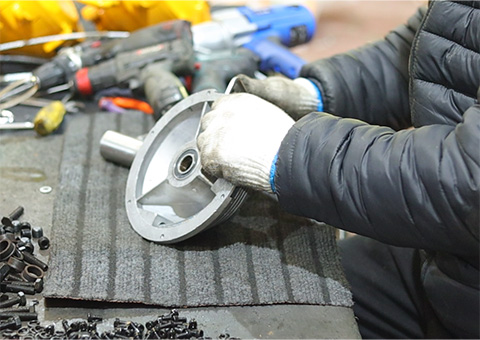Temporary Access Structure for Construction Projects and Road Maintenance Solutions
Understanding Temporary Gantries An Overview
In the realm of construction, transportation, and civil engineering, temporary structures often play a crucial role in ensuring the safety and efficiency of various projects. Among these structures, temporary gantries stand out as vital components that facilitate the smooth execution of activities, particularly in scenarios involving heavy lifting, overhead construction, or the movement of materials. This article delves into the significance, design, applications, and advantages of temporary gantries, shedding light on their pivotal role in modern engineering practices.
What is a Temporary Gantry?
A temporary gantry refers to a framework or structure, typically made from steel or aluminum, designed to support equipment, materials, or personnel during construction or maintenance activities. Unlike permanent structures, temporary gantries are not intended for long-term use; rather, they are erected for a limited duration to serve specific project needs. These structures can vary in size, complexity, and design based on the particular requirements of the task at hand.
Key Features and Design Considerations
The design of a temporary gantry must prioritize safety, stability, and functionality. Key considerations include
1. Load Capacity Temporary gantries must be engineered to support the weight of the equipment and materials they will carry. This involves calculating the maximum load and ensuring the structure is capable of handling it without risk of failure.
2. Height and Span The height and span of the gantry depend on the specifics of the project. For instance, a temporary gantry used for bridge construction may need to be significantly taller than one used for warehouse racking.
3. Materials The choice of materials is critical for ensuring durability while maintaining a manageable weight. Steel is commonly used for its strength, while aluminum might be preferred for its lightweight properties and ease of transport.
4. Mobility Some temporary gantries are designed to be mobile, allowing them to be repositioned as work progresses. This flexibility can enhance efficiency on job sites where multiple areas require access.
5. Safety Features Temporary gantries must include safety features such as guardrails, toe boards, and secure anchoring systems to protect workers and equipment during operation.
Applications of Temporary Gantries
Temporary gantries find applications across a range of industries
. Some common uses include
temporary gantry

- Construction Sites In building projects, temporary gantries assist with lifting and positioning heavy materials, like steel beams or precast concrete panels, ensuring they reach the desired height and location safely.
- Bridge Construction and Maintenance Temporary gantries facilitate repairs or renovations to existing bridges, providing a sturdy platform for workers to operate at various heights.
- Event Setup In the event management industry, temporary gantries can support lighting, banners, or signage, helping to create a visually appealing environment.
- Warehouse Operations Temporary gantries can be installed in warehouses to assist with high-level storage and retrieval tasks, streamlining inventory management processes.
Advantages of Temporary Gantries
The use of temporary gantries offers numerous advantages in construction and engineering projects
1. Enhanced Safety By providing a stable working platform, temporary gantries significantly reduce the risk of accidents during heavy lifting or overhead work.
2. Increased Efficiency Temporary gantries allow for the quick and effective movement of materials, thus facilitating productivity and minimizing downtime on job sites.
3. Cost Savings Investing in temporary structures like gantries can be more cost-effective than permanent installations, especially for short-term projects, as they eliminate the need for lengthy construction times.
4. Flexibility The modular nature of temporary gantries means they can be adapted or reconfigured for different tasks, making them versatile solutions for diverse projects.
Conclusion
Temporary gantries are indispensable tools in the construction and engineering sectors. Their ability to enhance safety, improve efficiency, and provide flexible solutions makes them critical for successful project execution. As industries continue to evolve and emphasize safety and productivity, the role of temporary gantries will undoubtedly expand, further solidifying their importance in managing complex construction environments. Understanding their design, applications, and advantages is essential for professionals working in fields that directly benefit from these vital structures.
-
Unlock Seamless Relocation with Our Heavy Equipment Moving ExpertiseNewsJun.06,2025
-
Unleash Unrivaled Flexibility with Our Adjustable Gantry CraneNewsJun.06,2025
-
Unleash Heavy-Duty Efficiency with Our Industrial Gantry Crane SolutionsNewsJun.06,2025
-
Revolutionize Steel Handling with Our Magnetic Lifter RangeNewsJun.06,2025
-
Master Equipment Mobility with Premium Machinery Mover SolutionsNewsJun.06,2025
-
Elevate Your Material Handling with Magnetic Lifter TechnologyNewsJun.06,2025
-
YS Permanent Lifting Magnets: The Smarter Way to Handle SteelNewsMay.22,2025
